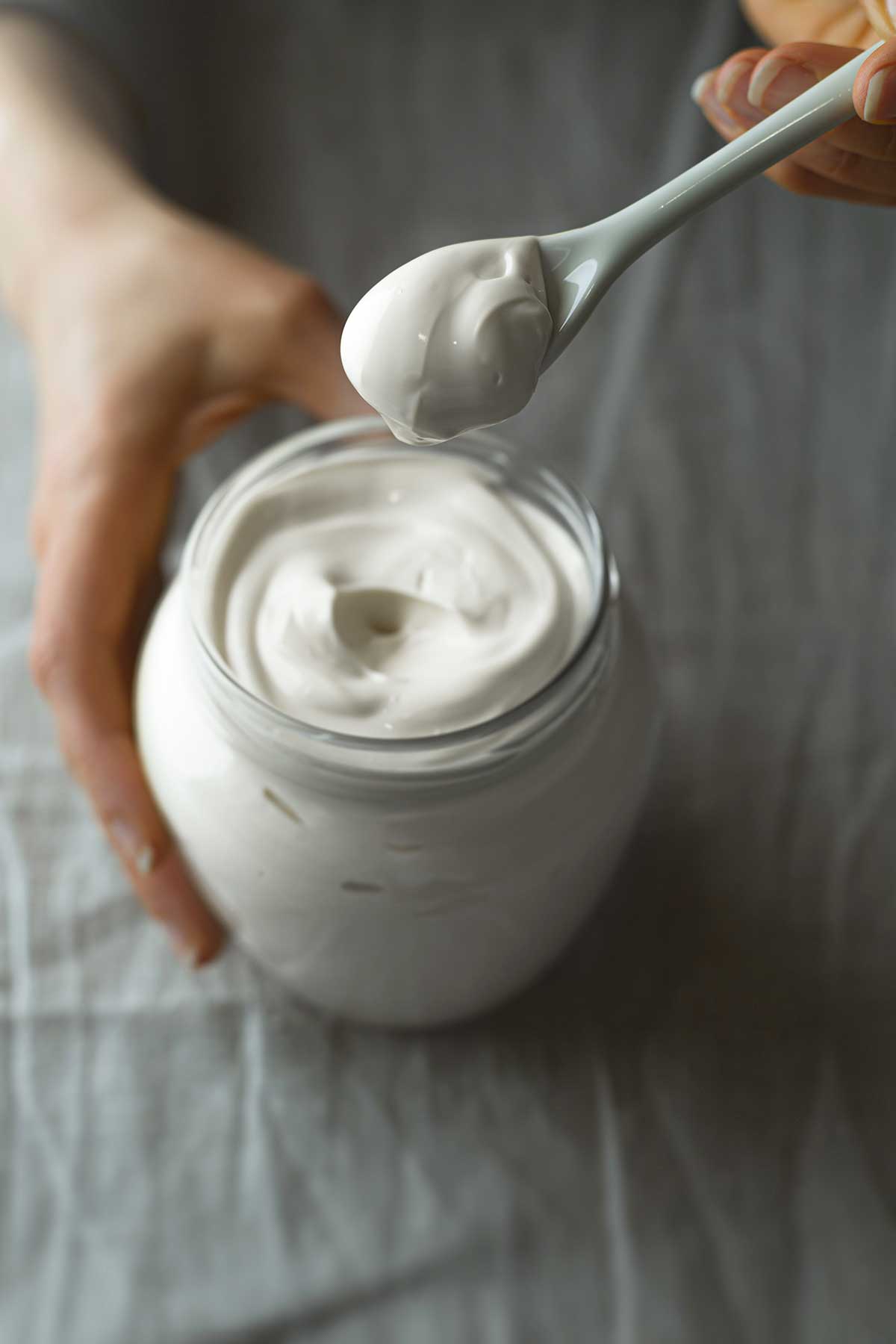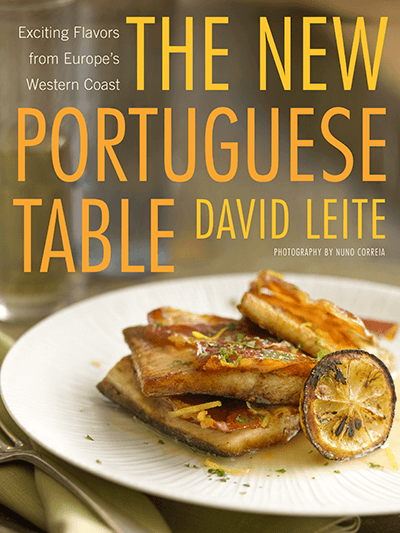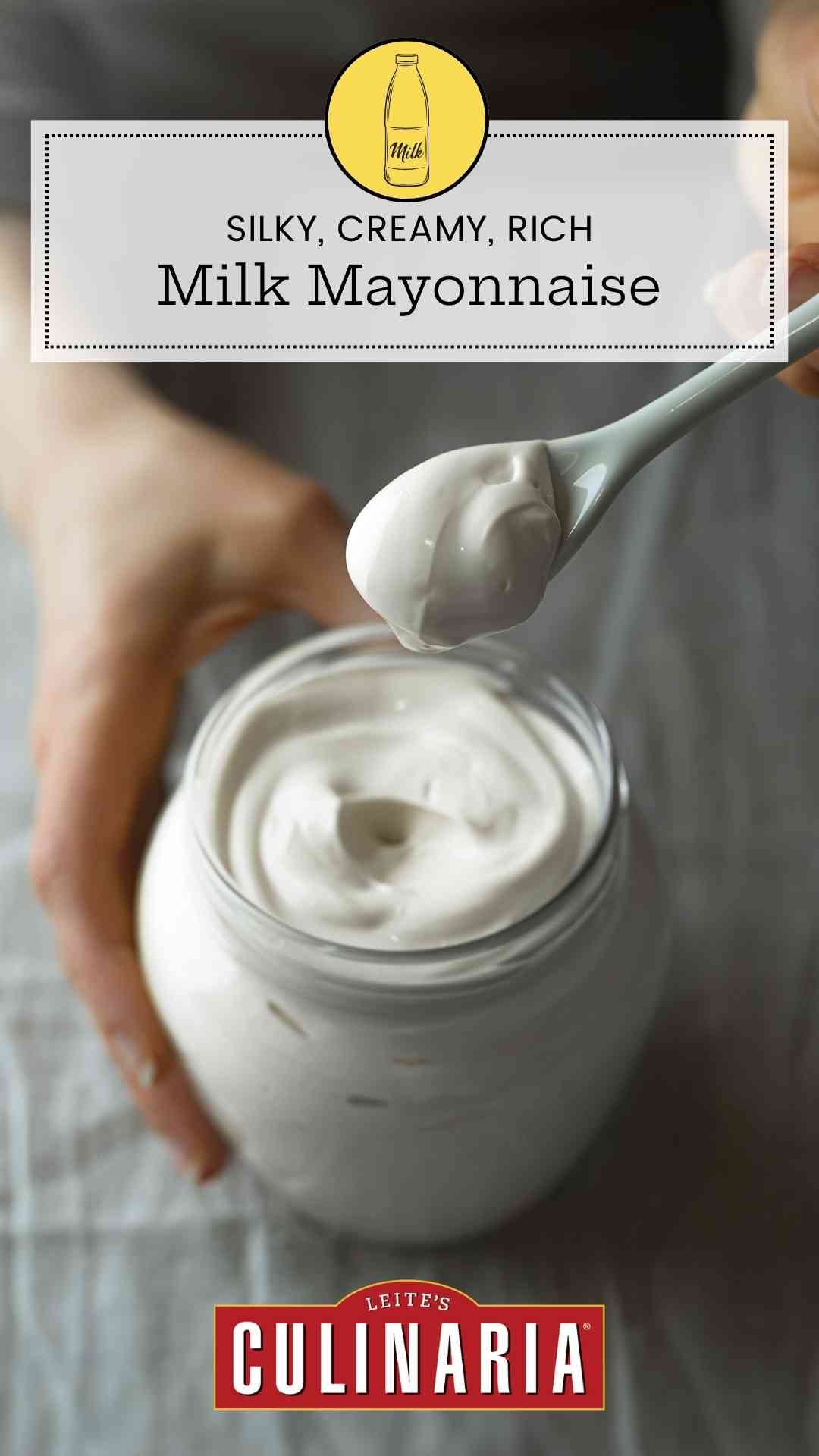
This is one of those recipes that require quotation marks, not out of affectation, but because it’s not a true mayonnaise. It contains no egg yolks or mustard. It’s nothing more than an emulsion of milk and oil. More Brazilian than Portuguese, it’s just now beginning to be used on the Continent. The taste is lighter and cleaner than that of egg-based mayonnaise, allowing other flavors to come through.
☞ Read the Article: The Secret Behind Milk Mayonnaise
Since I was given the recipe, I haven’t stopped finding ways to cook with it. The master recipe is only a canvas for additions. Besides the uses in this book, I’ve smeared the variations on grilled meats and fish, used them as dips and in dressings, spread them on sandwiches, and stirred them into potato salads, much as I do with actual mayonnaise.
Why Isn’t my Mayonnaise Emulsifying?
Like all emulsions, this recipe can be a bit finicky. But adding the oil in a thin stream and stopping when the right consistency is reached is the key. For almost foolproof results, a handheld blender is best, but a small canister blender with a narrow base will do (tall and narrow is best here). Don’t do as some of us did and assume that a stand mixer or food processor will work—it just won’t. If you’re working with a less-than-powerful immersion blender, the consistency of the mayonnaise may turn out thinner than you’d expect. You can help it along by slowly adding 2 more tablespoons of oil to the milk mayonnaise as you continue to blend and it will thicken nicely.

Milk Mayonnaise
Ingredients
- ⅓ cup very cold milk
- ¾ teaspoon fresh lemon juice
- 1 small garlic clove, peeled
- ⅛ teaspoon white pepper
- About ¾ cup vegetable oil, or 1/2 cup (118 ml) vegetable oil plus 1/4 cup (60 ml) olive oil
- Kosher salt
Instructions
- Combine the milk, lemon juice, garlic, and pepper in a 2-cup glass measuring cup. Using a handheld blender (or a blender), buzz on high for 30 seconds until frothy.
- With the motor running on high, slowly pour in the oil a few drops at a time, and gradually increase this to a fine thread, moving the blender up and down, until the mixture thickens lusciously and resembles a soft mayonnaise. You may need more or less oil.
- Season with salt to taste. The mayonnaise will last up to 1 week in the fridge.
Notes
Milk mayonnaise variations
Clockwise from top right: cilantro-ginger, curry, anchovy, sun-dried tomato.
Cilantro and Ginger Milk Mayonnaise | Maionese de Leite com Coentros e Gengibre
Add 1 loosely packed cup of well-dried fresh cilantro leaves and tendril-soft stems and a 1 1/2-inch peeled and grated thumb of ginger to the cup along with the milk, 1 3/4 teaspoons of lemon juice, and the pepper. Omit the garlic. Whir in the oil as directed above. Stir in 1 scallion cut into thin slices on the diagonal.Anchovy Milk Mayonnaise | Maionese de Leite com Anchovas
Add 6 anchovy fillets (generous 1 tablespoon) packed in oil to the cup along with the milk, lemon juice, garlic, and pepper. Whir in the oil as directed above. Omit the salt.Curry Milk Mayonnaise | Maionese de Leite com Caril
Add 2 teaspoons of your favorite curry powder to the cup along with the milk, lemon juice, garlic, and pepper. Whir in the oil as directed above. Before using, let this sit for an hour or so in the fridge to bloom.Tomato Milk Mayonnaise | Maionese de Leite com Tomate
Add 1 1/2 tablespoons of double-concentrate tomato paste to the cup along with the milk, garlic, and pepper. Omit the lemon juice. Whir in the oil as directed above. Stir in 1 tablespoon minced oil-packed sun-dried tomatoes.
Nutrition
Nutrition information is automatically calculated, so should only be used as an approximation.











Hi there, David. Stumbled upon this milk mayonnaise recipe while experimentally wondering if there was such a thing as mayo that used milk. The fact that it actually existed shocked me, and despite having just made a fresh batch of Japanese mayo a few days before, I got the unquenchable urge to make it anyway, just out of curiosity.
I substituted with powdered milk (still very cold, though) and added an extra clove of garlic. But I made sure to follow the part about the stick blender in a measuring cup. It came out great, if just a liiiiiittle bit runny. Is it because I used powdered milk, or too much garlic?
Your feedback would be greatly appreciated.
Regards,
Amanda
Hi Amanda, thanks for the kind words. According to your comment, the only difference is the evaporated milk, so I’d say it was that. Did you use low-fat or nonfat evaporated milk? The “mayo,” and I put it in quotes as it’s not a true mayo due to the lack of eggs, requires the milk fat and oil to emulsify. Also, try whizzing the mayo a little bit longer.
Curious: Why not use regular whole milk?
I got away with 2% milk, lemon juice, and substituted two teaspoons of Dijon for the garlic (added more lemon juice later for taste). Turned out really well, thanks for the recipe!
Clive, just doing my job, sir.
Marre1943, thanks for writing. If you look closely, the recipe states use a handheld or wand blender. (If you use a blender, it has to be a mini one.) This really can’t be made well in a regular-size blender, as there isn’t enough volume to the ingredients, and most blenders are just too big. Try it in a measuring cup using a handheld blender (or even in a mini chop food processor), and I think you’ll have success. Also, make sure to puor the oil in very, very slowly.
I used my Oster blender with the (much improved) Fusion blade and it worked great. I I don’t think this would work with the Oster’s original blade.
Dear Mr. Smith Goes to Portugal (sorry, couldn’t resist!), indeed it wouldn’t work with its regular blade; I speak from experience.
would it work with a milkshake blade in the blender?
cletusmoses, no, unless you were making three or four times as much. And the chances are high of it breaking with that much liquid. This really is a mini chop or handheld wand blender recipe.
Thank you so much. I made a Garlic, Balsamic, and Dijon version. Tastes amazing. The color could use a bit of improvement (the balsamic) But none the less very tasty.
Hi, Sue. Sounds interesting. I don’t know if you even need the balsamic, as Dijon mustard has vinegar in it. Would help the color.